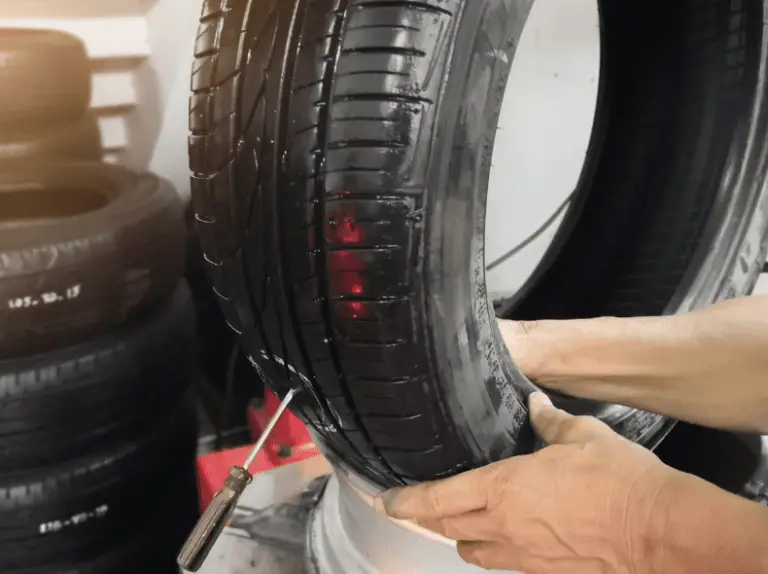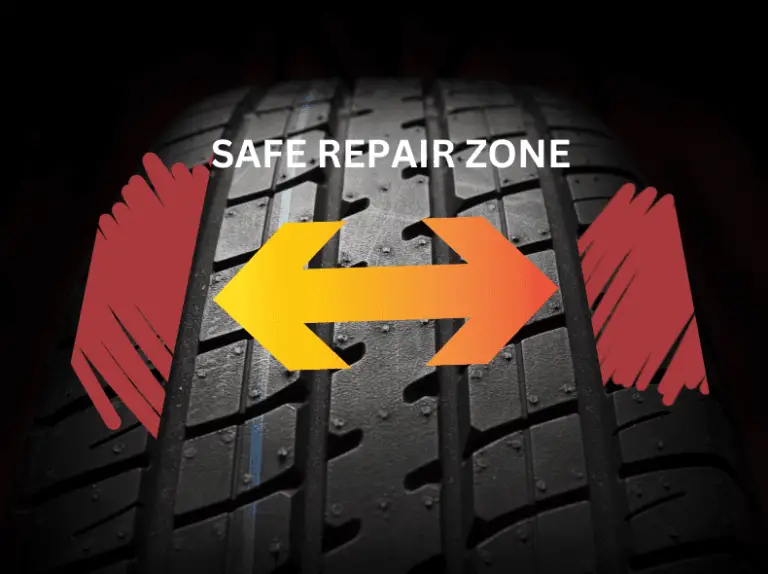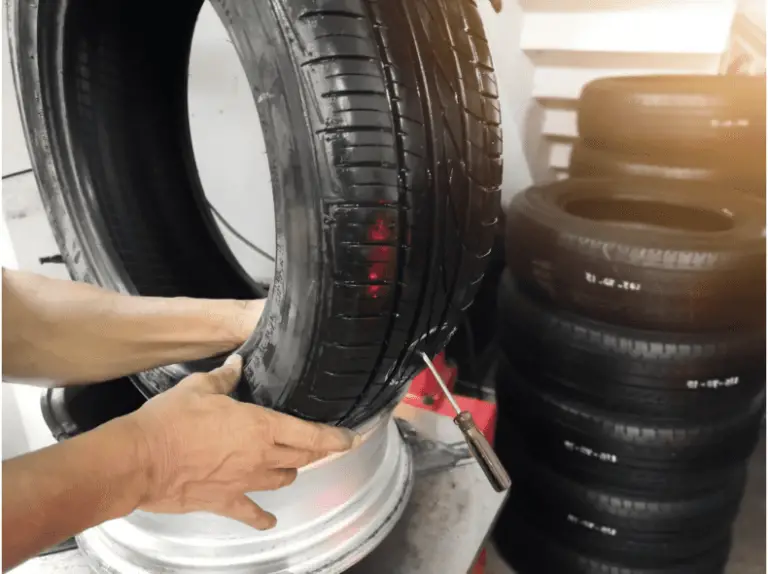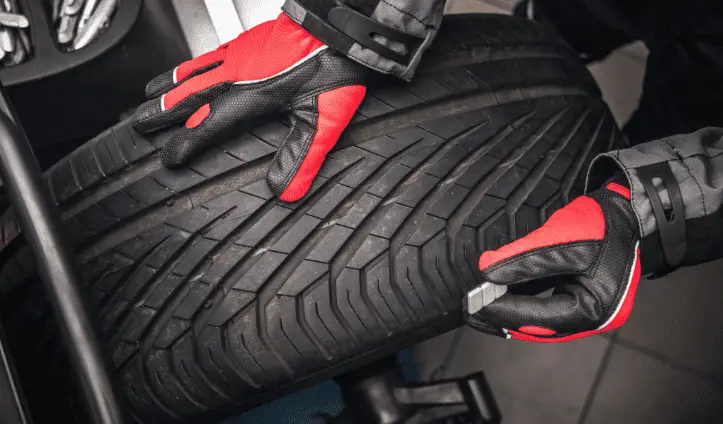Many people ask this question. Initially, they are quite happy that they have managed to salvage their tire but then have concerns about its long-term viability and performance.
So just how fast can you drive with a patched tire?
Below we will look at all the considerations because there isn’t a one-size-fits-all answer to this question.
Generally, a professionally patched tire will lose its speed rating guarantee and only be endorsed to 85 mph rather than the higher speed it was rated to previously. This is still well within the speed limit allowed anyway in most countries.
Patched or Plugged
Firstly are you sure you have patched rather than plugged your tire? If this seems obvious, I apologize, but many people use these two words interchangeably.
If you have done the repair yourself and not taken the tire off the rim or used a mushroom patch, then you have likely plugged your tire and not patched it.
A plug usually involves putting a rubber or leather strip inside the whole without taking the tire off the rim or the wheel. Many plug kits say you can only drive up to 50 mph and only 100 miles before the tire should be removed and the inside inspected.
Let’s assume that you have patched your tire or taken it to a tire shop, and they have done it for you.
Do All Tire Manufacturers Have The Same Speed Rating Repair Rules?
Some tire manufacturers will void the speed rating if a tire is patched, while others will maintain it as long as they are the repairers.
Others will not speed rate their performance tires when patched and others will void all repaired tires regardless of the rating and repairer.
Professional or DIY Tire Patch Repair?
Did you repair it, or did you take it to a tire shop to do it?
This question is relevant because although it may seem that tire patching a tire is quite simple, however, it is always better to have it done professionally for three reasons:
- A tire shop may have access to higher quality patching kit than what you had access to from Amazon or other shopping sites.
- They also have more experience patching tires than you do and, therefore, would likely be more competent in doing this.
- They are likely to be more brutal in assessing whether a tire can be patched. They are less likely to patch a dangerous tire than the car owner, who may be solely concerned with trying to save money.
If you have had your tire patched professionally, this should give you more confidence that you should be able to drive at the usual speed you did before the tire patch was done.
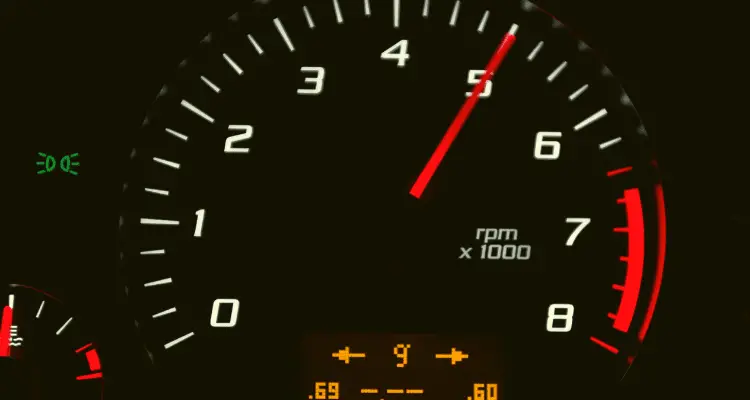
If you have repaired the tire with a kit, you should maybe err on the side of caution and test out various speeds before driving at fast speeds again.
What Does the Patch Kit Information Advise?
If you patch the tire yourself, look at the manufacturer’s website or the packaging in which the patch kits came.
There should be a disclaimer outlining the terms and conditions of patch usage. This is likely to state whether the patch kit is considered a permanent fix and how fast the repair is good for other precautions you should take once you have applied the patch.
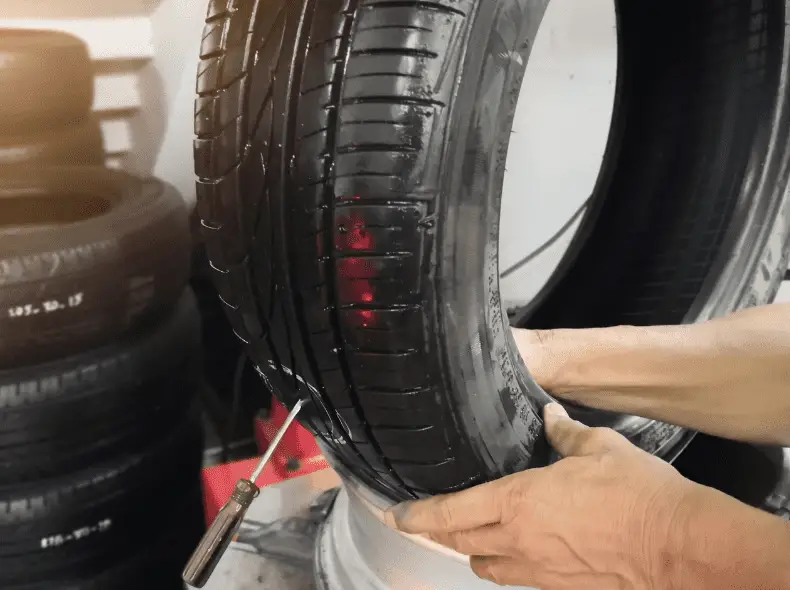
Most patch kit manufacturers will be very cautious and advise that a qualified technician inspect the tire to confirm that the repair has been done effectively.
Very few people do, but they have covered themselves by including this in the sales or installation literature.
Test It Out At Low Speeds To Increase Confidence
As with any repair or modification on your car, you should drive at slow speeds to start with to ensure that the repair or modification is working correctly.
With tire patches, it makes more sense to drive at lower speeds and check the area afterward to ensure there is no leakage.
Spraying soapy water on the hole area will give you an indication of whether the patch is holding back the leak or not.
It makes sense to periodically over the first few weeks of repairing the tire with a patch to spray the area occasionally for your peace of mind. Don’t drive at fast speeds until you are happy the patch is holding.
Be Mindful of Road and Weather Conditions
We are always more mindful of road and weather conditions when driving, but be extra vigilant if you have recently patched your tire.
Winter and studded tires are put through more stress owing to the weather conditions they are operating, and it would make more sense to spend more time ensuring the patch has sealed a hole correctly before driving at speed.
Related Article: How Fast Can You Go With Studded Tires? [Answered]
To be absolutely sure a quality repair has been done on a studded or winter tire, it pays to visit a tire shop and let them inspect and repair the tire.
Insurance Still Valid
If the tire patch manufacturer has stated that the patch is only temporary or you haven’t patched it properly, you may run into difficulty if you become involved in an accident and it was deemed that you were had fault.
Many litigation attorneys will happily take on cases where the driver of the at-fault vehicle was driving with an unroadworthy vehicle.
All insurance companies, in their terms and conditions, will state that your cover depends on your vehicle being maintained to a reasonable standard.
Driving with a badly patched may invalidate your cover and leave you open to large civil claims from other road users should the tire fail.
Be Cautious
It pays to be very cautious when you are driving with patched tires.
It is difficult to say how fast you can drive on them without having access to the information you got when you patched your tire.
Look at the tire puncture kit manufacturer’s website for guidance, or speak to the tire shop that patched your tire for information.
If in doubt, pull back on your speed and drive more conservatively, so you don’t put additional strain on the repaired area.
How Old is the Tire? Better To Replace?
If you haven’t patched the tire yet and are curious as to how fast you can drive on it, it may be worth considering the current state of the tire that you are looking to patch.
How much tread do you have left on it? If you have less than 5 / 32 in left, it may be worth replacing the tire at this stage anyway.
A tire with this little tread is very close to the end of its natural life anyway, and you will find yourself back in the car shop within 3000 miles to get a brand new replacement.


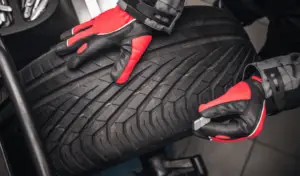
![How Fast Can You Go On A Plugged Tire? [ANSWERED] Plugged-tire-tread](https://carzaza.com/wp-content/uploads/2023/12/Plugged-tire-tread-300x224.png)
![Are Tire Patches Permanent? [ANSWERED] tire-patch-tire-shop](https://carzaza.com/wp-content/uploads/2023/12/tire-patch-tire-shop-300x224.png)


